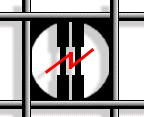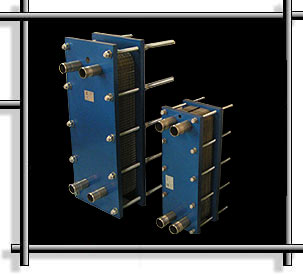
|
Plate heat exchangers consist of two tightening steel plates with rubber spacers tightened between them. Plates are set up between two guide plates and can be tightened with tie bolts to a necessary size. In order to remove scales the heat exchangers are being washed with a special solution or dismantled to clean the plates mechanically. The capacity of the heat eschanger depends on the size and quantity of plates and is calculated using a specially developed computer program.
There are three different standard sizes of plates made of stainless steel (AISI 304), spacers are made of heat-resistant rubber.
 |
Specifications: |
Standard size |
Plate surface area (m2) |
Plate dimansions (mm) |
Working capacity range (KW) |
Output rate (m3/hour) |
ТП-0,025 |
0,025 |
298x126x0,5 |
6 - 70 |
0,22 - 2,5 |
ТП-0,08 |
0,08 |
602x166x0,8 |
70 - 700 |
2 - 15 |
ТП-0,134 |
0,134 |
800x285x0,8 |
100 - 1800 |
14 - 30 |
- Permissible working temperature: - 20°С to +100°С.
- Maximal working pressure: 1,0 MPa (10 kg/cm2).
- Pressure loss at maximal capacity not exceeding 0,4 kg/cm2
 |
Advantages: |
The
present heat exchanger has the following advantages in comparison with shell-and-tube
ones:
- heat transmission efficiency is 3-5 times as high;
- overall dimensions are far smaller;
- simple disassembly and reassembly permit to clean repeatedly heat exchange surfaces;
- external insulation is not required.
 |
Feild of use |
Plate heat exchangers can be used:
- at heating stations providing hot water supply and heating (mini boiler houses, private and multicompartment buildings, heating stations of industrial enterprises, public buildings, saunas, swimming pools etc.);
- in industrial equipment as liquid coolers (for oil, mineral water, beer, wine etc.)
|





